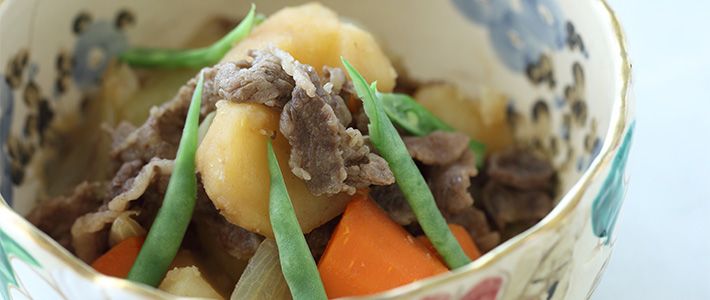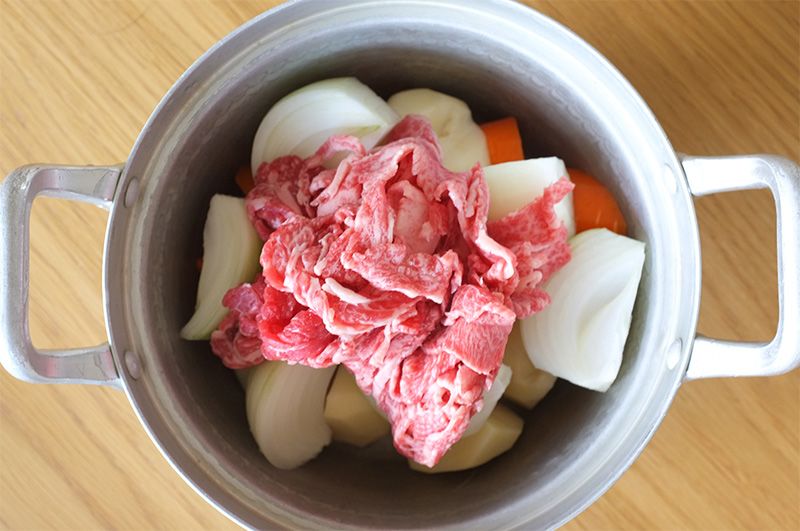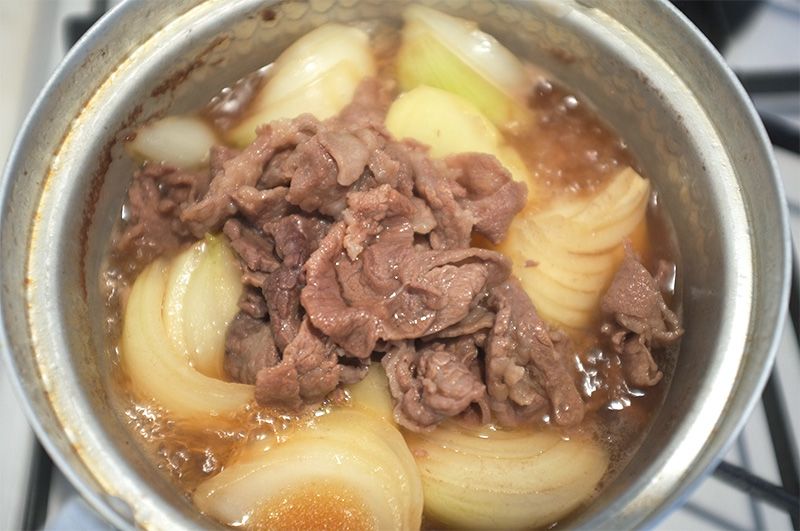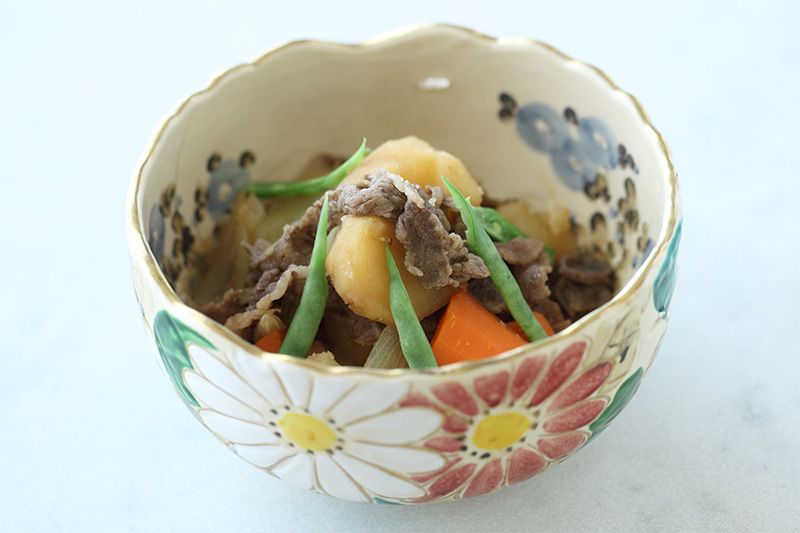
Shortcuts to Scrumptious Japanese Food
“Nikujaga”: A Hearty Side Dish Costarring Meat and Potato
Guideto Japan
Culture
Nikujaga is, as its name suggests, meat (niku) and potatoes (jagaimo) stewed together. It’s one of the signature dishes of the modern Japanese kitchen; a chef who cooks nikujaga well knows the way to his or her partner’s heart, it was once said. Either beef or pork can be used. If thinly sliced meat is unavailable at a local store, just cut a slab of steak or other meat into small slices.
- English
- 日本語
- 简体字
- 繁體字
- Français
- Español
- العربية
- Русский
Ingredients (serves 2–3)
- 200 g thinly sliced beef (pork can also be used)
- 2 potatoes
- 1 medium onion
- 1 small carrot
- Snap peas for garnish, as desired
- About 200 ml water
- Four-quarter sauce:
- 2 tbsp sugar
- 2 tbsp mirin (sweet cooking sake; if not available, increase sugar and sake to 3 tbsp each)
- 2 tbsp soy sauce
- 2 tbsp sake
Directions
- Peel and quarter the potatoes. Peel the onion and cut into six wedges. Peel the carrot and chop into bite-size pieces, about half the size of the potatoes.
- Put all the vegetables and sauce ingredients in a pot and place on heat.
- Simmer until the potato and carrot are tender.
- Blanch the snap peas in salted water, then drain. Arrange the nikujaga in a bowl and sprinkle the peas on top for a dash of color.
Cooking Tips
- With an ideal balance of meat and vegetables, nikujaga is a staple dish in Japanese home cooking.
- Nikujaga typically also includes the noodle-like ito konnyaku, made from konnyaku, konjac potato. This recipe does without the ingredient, however, as it can be hard to come by overseas.
- Thinly sliced meat may not be readily available at your butcher’s shop. If thinly sliced beef is not available, cut a slab of steak or other meat into slices, and then chop up into smaller pieces.
- If using pork instead of beef, choose a fatty cut, such as pork belly. Lean meat will toughen as it cooks.
- The snap peas are added for color. For a delicate finish, cut them lengthwise to expose the insides.


